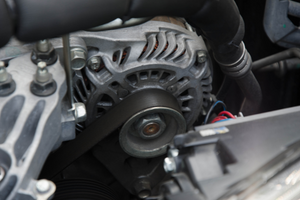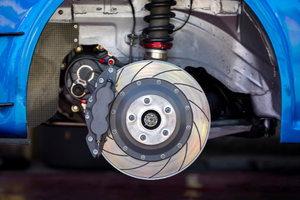How can I tell if my vehicle has a smart alternator31 March 2022 | Paul When looking at split charging, you might have seen the phrase 'Smart Alternator' mentioned (along with Euro5/6 engine); but what is a Smart Alternator and how can you tell if you have one?
Smart alternators are part of a voltage variation system fitted to many newer vehicles. These voltage variation systems often work in conjunction with regenerative braking and help vehicle manufacturers lower the CO2 produced by their vehicles to meet emissions targets. Installed in vehicles since 2015 (these vehicles are classed as Euro 5 or Euro 6), these systems take advantage of the kinetic energy that is normally converted to heat and wasted during braking, and instead convert it to electrical energy to recharge the battery. As a result, the vehicle's alternator does not need as work as hard which reduces fuel consumption and therefore CO2 emissions. As the name suggests, these voltage variation systems can alter the voltage output from the alternator and this is problematic when it comes to charging a leisure or auxiliary battery. High voltages produced during braking can damage leisure batteries & low voltages produced when the starter battery no longer needs charging are not sufficient to charge leisure batteries, so these systems are not compatible with older VSR split charge solutions. Thankfully, DC-DC chargers are now available that work with these voltage variation systems to provide a charging solution for second batteries. So, how can you tell if your vehicle has one of these voltage variation systems? Regenerative Braking - Most vehicle manufacturers used to advertise that their vehicle had this system as the benefits to the vehicle's fuel consumption were a great selling point. But, as it became more common it became less of a marketing feature and is now pretty much standard equipment on most vehicles, so may not be explicitly stated. If you know your vehicle has this system then it will be a Euro5/6 vehicle and therefore will require a DC-DC charger.
Manufactured during or after 2015 - Most vehicles made from 2015 onwards, including light commercial, will be Euro5/6 compliant, however, it is worth checking with the manufacturer if in doubt, or you can carry out the below test. Testing my vehicle - If you are unsure, you can carry out the following test. Using a voltmeter attached to the vehicle (via a cigarette socket would work), take it out for a 20-40 min drive with another person. During the drive, have the other person monitor the meter. Should the voltage go up and down between around 12-15V then the vehicle has a smart alternator and you will need to use a DC-DC charger. If it stays steady & consistent at about 14V or so then you will have a fixed voltage alternator and be able to use a VSR.
DC-DC chargers can be used with both smart and fixed voltage alternators, so if you are in doubt the best option would be to install a DC-DC charger to be on the safe side. For further information on this topic, you can read our guide here
|
|
12 Volt PlanetAuto & Marine Electrical Components |











